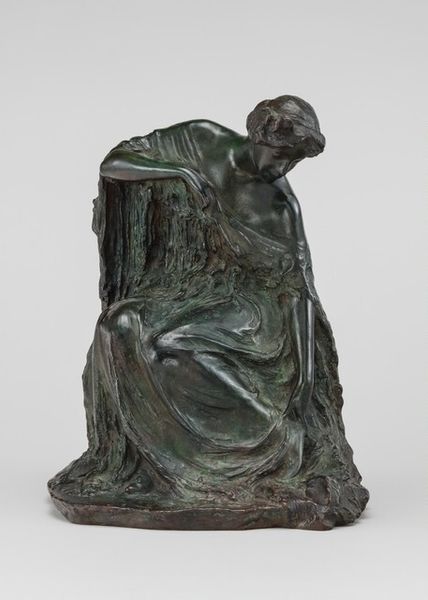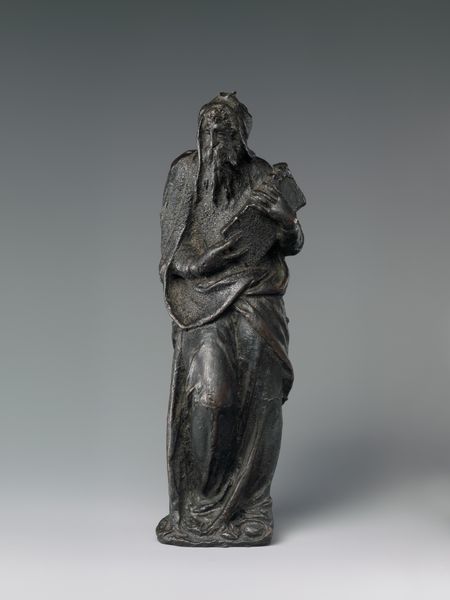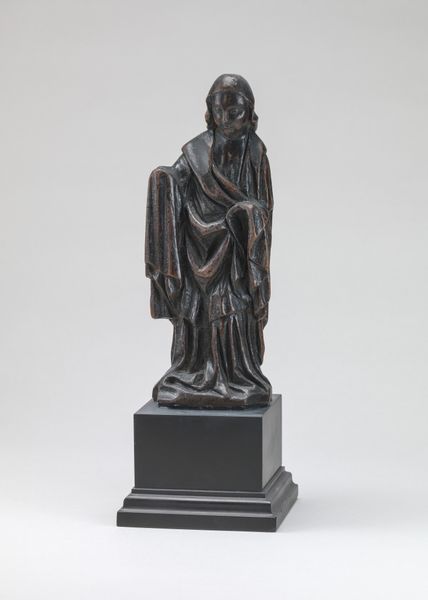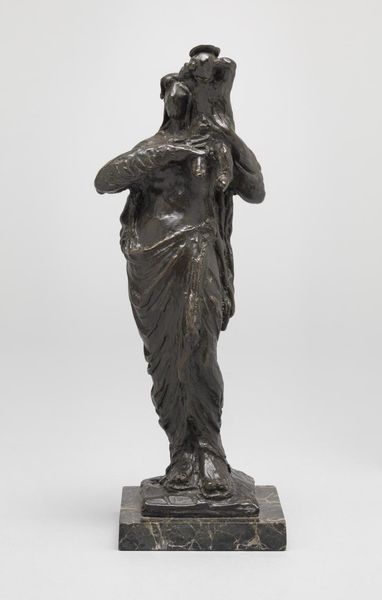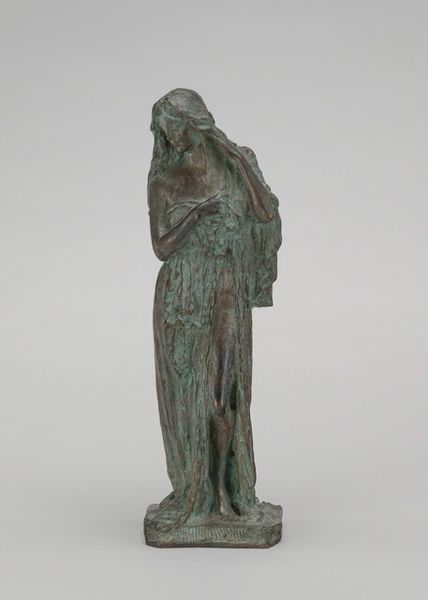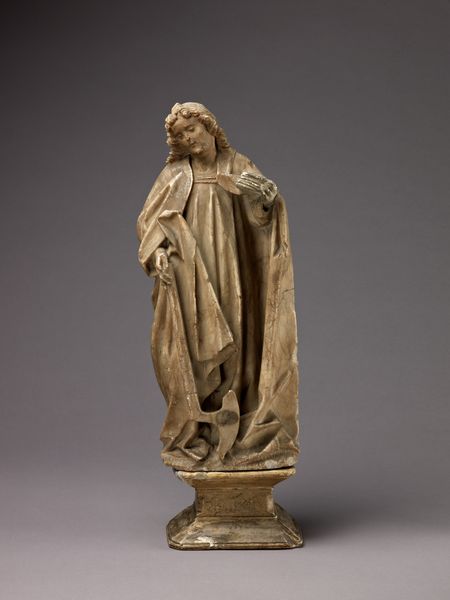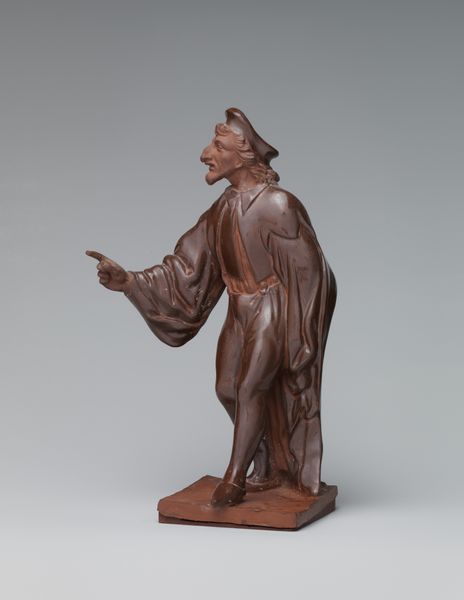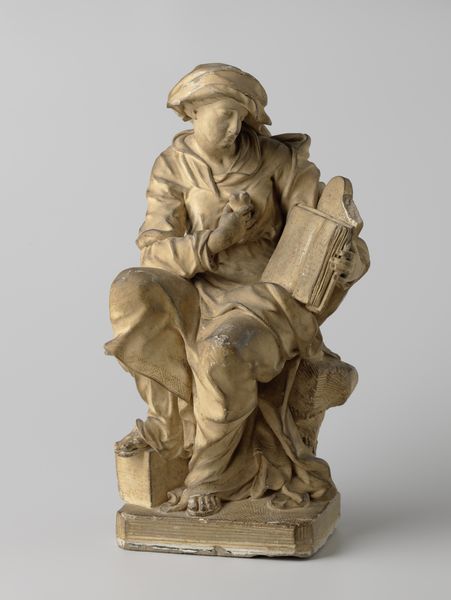
bronze, sculpture
#
portrait
#
arts-&-crafts-movement
#
sculpture
#
bronze
#
figuration
#
sculpture
#
genre-painting
#
realism
Dimensions: overall: 21.59 × 15.24 × 15.88 cm (8 1/2 × 6 × 6 1/4 in.)
Copyright: National Gallery of Art: CC0 1.0
Curator: This is Bessie Potter Vonnoh's bronze sculpture, "Girl Reading," created in 1897. Editor: I'm struck by the stillness, that absorbed focus. It's quiet, domestic... very intimate for a sculpture. Curator: Vonnoh was deeply influenced by the Arts and Crafts movement. Her work often celebrated idealized notions of womanhood, beauty and domesticity, countering industrialization's effects on turn-of-the-century society. She carved a niche capturing the grace of everyday moments, often depicting women in repose. Editor: The material choice really reinforces that connection to domesticity and craft. Bronze offers a warmth that colder materials like marble wouldn’t achieve. I'm also noticing the dress—the way it drapes and flows; the making is emphasized almost as much as the figure herself. Curator: Indeed, it embodies the stylistic preference of that era: naturalism softened with sentimentality. Vonnoh exhibited extensively, and her work resonated widely, demonstrating an appeal for art reflecting middle-class values and aspiration during that period. Her works offered, really, a subtle form of social commentary on idealized domestic life. Editor: How do you see that subtle social commentary manifesting? I mean, to my eye, it presents this image without obvious conflict or interrogation. More observation of this casting reveals that some aspects were made to appear 'unfinished', like it came straight out of the ground. Was that a popular aesthetic for sculpture then, in contrast to the machine made, perhaps? Curator: Certainly. There’s a conscious decision to embrace the handmade in that era. But for Vonnoh specifically, these works served to provide idealized types, images of gentility and private life in a rapidly urbanizing environment where women sought visibility in the arts. She sold many of her sculptures and reliefs. Editor: Considering the labor then... from conception to execution, what would a sculpture like this have entailed? How many hands would have been involved in this bronze work before it reaches an audience? Curator: Likely several, including the artist, foundry workers specializing in casting and finishing, and possibly assistants for some stages. Each would bring specialized skills in modeling, mold-making, and metalworking. The means of production themselves carry significance. Editor: It gives me so much to consider the way materiality and manufacture are implicated in even the seemingly most straightforward portraiture, and to ponder its position and purpose at that specific moment in time. Curator: Absolutely. And for me, considering how deeply this image was embraced in public taste illuminates what values and attitudes shaped art production in America at the end of the 19th century.
Comments
No comments
Be the first to comment and join the conversation on the ultimate creative platform.

